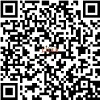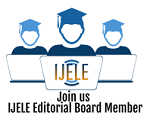*corresponding author
AbstractThe method of using mathematics textbooks for teaching impacts their effectiveness as a learning and teaching medium. Therefore, it is essential to understand how to use mathematics textbooks effectively. Based on this background, this study aims to analyze the use of mathematics textbooks by an experienced Junior High School mathematics teacher in the classroom. The content analysis method is employed to compare the textbooks with the teaching materials actually used by teachers in terms of teaching content and design sequence. Teachers generally recognize the content of mathematics textbooks well and utilize most of the contents. However, the textbook content is often split, reorganized, supplemented, and deleted during use. Furthermore, teachers adjust the teaching sequence based on the textbooks. This indicates that teachers effectively redesign textbooks in their application. This research suggests that teachers should not use mathematics textbooks directly but should adapt them to fit their respective schools' contexts.
KeywordsTextbook usage; Textbooks for teaching; Mathematics textbooks
|
DOIhttps://doi.org/10.31763/ijele.v6i2.1508 |
Article metrics10.31763/ijele.v6i2.1508 Abstract views : 370 | PDF views : 82 |
Cite |
Full Text Download Download
|
References
[1] L. Fan, “Textbook research as scientific research: towards a common ground on issues and methods of research on mathematics textbooks,†ZDM, vol. 45, no. 5, pp. 765–777, Sep. 2013, doi: 10.1007/s11858-013-0530-6.
[2] S. Plianram and M. Inprasitha, “Exploring Elementary Thai Teachers’ Use of Mathematics Textbook,†Creat. Educ., vol. 03, no. 06, pp. 692–695, 2012, doi: 10.4236/ce.2012.36103.
[3] R. Even and B. B. Schwarz, “Implications of competing interpretations of practice for research and theory in mathematics education,†Educ. Stud. Math., vol. 54, pp. 283–313, 2003. doi: 10.1023/B:EDUC.0000006166.50134.7a
[4] A. G. Howson, Mathematics textbooks: A comparative study of grade 8 texts. Canada, 1995.
[5] K. Yamaguchi and K. Okada, “Comparison among cognitive diagnostic models for the TIMSS 2007 fourth grade mathematics assessment,†PLoS One, vol. 13, no. 2, p. e0188691, Feb. 2018, doi: 10.1371/journal.pone.0188691.
[6] G. A. Valverde, L. J. Bianchi, R. G. Wolfe, W. H. Schmidt, and R. T. Houang, According to the book: Using TIMSS to investigate the translation of policy into practice through the world of textbooks. Dordrecht: Springer Netherlands, 2002. doi: 10.1007/978-94-007-0844-0_8
[7] M. Amit and M. N. Fried, “Research, reform, and times of change,†in Handbook of international research in mathematics education, Lawrence Erlbaum Associates Hillside, NJ, 2002, pp. 355–381.
[8] K. Chval, D. Heck, I. Weiss, and S. W. Ziebarth, Approaches to studying the enacted mathematics curriculum. IAP, 2012.
[9] Y. Li, J. Zhang, and T. Ma, “Approaches and practices in developing school mathematics textbooks in China,†ZDM, vol. 41, no. 6, pp. 733–748, Nov. 2009, doi: 10.1007/s11858-009-0216-2.
[10] E. A. Silver, “Cross-national comparisons of mathematics curriculum materials: what might we learn?,†ZDM, vol. 41, no. 6, pp. 827–832, Nov. 2009, doi: 10.1007/s11858-009-0209-1.
[11] J. Törnroos, “Mathematics textbooks, opportunity to learn and student achievement,†Stud. Educ. Eval., vol. 31, no. 4, pp. 315–327, Jan. 2005, doi: 10.1016/j.stueduc.2005.11.005.
[12] C. C. Nicol and S. M. Crespo, “Learning to Teach with Mathematics Textbooks: How Preservice Teachers Interpret and Use Curriculum Materials,†Educ. Stud. Math., vol. 62, no. 3, pp. 331–355, Jul. 2006, doi: 10.1007/s10649-006-5423-y.
[13] I. V. S. Mullis, M. O. Martin, P. Foy, and K. T. Drucker, PIRLS 2011 international results in reading. ERIC, 2012.
[14] L. Fan, Y. Zhu, and Z. Miao, “Textbook research in mathematics education: development status and directions,†ZDM, vol. 45, no. 5, pp. 633–646, Sep. 2013, doi: 10.1007/s11858-013-0539-x.
[15] B. Pepin, G. Gueudet, and L. Trouche, “Investigating textbooks as crucial interfaces between culture, policy and teacher curricular practice: two contrasted case studies in France and Norway,†ZDM, vol. 45, no. 5, pp. 685–698, Sep. 2013, doi: 10.1007/s11858-013-0526-2.
[16] R. Reys, B. Reys, R. Lapan, G. Holliday, and D. Wasman, “Assessing the Impact of ‘Standards’-Based Middle Grades Mathematics Curriculum Materials on Student Achievement,†J. Res. Math. Educ., vol. 34, no. 1, p. 74, Jan. 2003, doi: 10.2307/30034700.
[17] M. Österholm, “Läsa matematiska texter: Förståelse och lärande i läsprocessen.†Matematiska institutionen, 2004.
[18] R. Gilbert, “Text analysis and ideology critique of curricular content,†Language, authority and criticism. Readings on the school textbook. London: The Falmer Press, pp. 61–73, 1989.
[19] E. Love and D. Pimm, “‘This is so’: A text on texts,†International handbook of mathematics education: Part 1. Springer, pp. 371–409, 1996. doi: 10.1007/978-94-009-1465-0_12
[20] L. Haggarty and B. Pepin, “An Investigation of Mathematics Textbooks and their Use in English, French and German Classrooms: Who gets an opportunity to learn what?,†Br. Educ. Res. J., vol. 28, no. 4, pp. 567–590, Aug. 2002, doi: 10.1080/0141192022000005832.
[21] B. Pepin and L. Haggarty, “Mathematics textbooks and their use in English, French and German classrooms:,†Zentralblatt für Didakt. der Math., vol. 33, no. 5, pp. 158–175, Oct. 2001, doi: 10.1007/BF02656616.
[22] X. Li, “Teaching textbooks†or ‘using textbook’: A perspective of improving teaching materials function,†Exploring Education Development, vol. 10. pp. 82–85, 2008.
[23] W. S. Bush, “Preservice Teachers’ Sources of Decisions in Teaching Secondary Mathematics,†J. Res. Math. Educ., vol. 17, no. 1, p. 21, Jan. 1986, doi: 10.2307/749316.
[24] M. Johansson, “Textbooks as instruments,†Three Teach. Ways to Organ. Their Math. Lessons.«In NOMAD, vol. 11, no. 3, pp. 5–30, 2006.
[25] G. Lloyd, “Mathematics Teachers’ Beliefs and Experiences with Innovative Curriculum Materials,†in Beliefs: A Hidden Variable in Mathematics Education?, Dordrecht: Springer Netherlands, 2002, pp. 149–159. doi: 10.1007/0-306-47958-3_9
[26] A. Tyson-Bernstein, H. & Woodward, “Nineteenth century policies for twenty-first century practice: the textbook reform dilemma,†in Textbooks in American society, Albany: SUNY Press, 1991, pp. 91–104.
[27] D. R. Thompson and S. L. Senk, “The same geometry textbook does not mean the same classroom enactment,†ZDM, vol. 46, no. 5, pp. 781–795, Oct. 2014, doi: 10.1007/s11858-014-0622-y.
[28] D. J. Freeman and A. C. Porter, “Do Textbooks Dictate the Content of Mathematics Instruction in Elementary Schools?,†Am. Educ. Res. J., vol. 26, no. 3, pp. 403–421, Jan. 1989, doi: 10.3102/00028312026003403.
[29] L. Fan, J. Chen, Y. Zhu, X. Qiu, and J. Hu, “Textbook Use within and beyond Mathematics Classrooms: A Study of 12 Secondary Schools in Kunming and Fuzhou of China,†in How Chinese learn mathematics: perspectives from insiders, 2004, pp. 228–261. doi: 10.1142/9789812562241_0009
[30] M. Brown and D. Edelson, “Teaching as design,†in The center for Learning Technologies in Urban Schools: LeTUs Report Series, 2003.
[31] J. T. Remillard and M. B. Bryans, “Teachers’ Orientations toward Mathematics Curriculum Materials: Implications for Teacher Learning,†J. Res. Math. Educ., vol. 35, no. 5, p. 352, Nov. 2004, doi: 10.2307/30034820.
[32] P. Huo, “A Critical Analysis of research Frameworks on Textbook Usage,†Glob. Educ., vol. 45, no. 8, pp. 31–42, 2016.
[33] G. Lloyd, “Curriculum use while learning to teach: One student teacher’s appropriation of mathematics curriculum materials,†J. Res. Math. Educ., vol. 39, no. 1, pp. 63–94, 2008.
[34] N. Kong, F., & Shi, “Process analysis and level determination for teachers using textbooks,†J. Shanghai Educ. Res., vol. 3, pp. 4–9, 2008.
[35] F. and Zhang, “Investigation on the Present Situation of High School Geography Teachers’Use of Unit Activities in Textbooks,†J. Tianjin Norm. Univ. Educ. Ed., vol. 22, no. 2, pp. 77–80, 2021.
[36] J. T. Remillard, “Curriculum Materials in Mathematics Education Reform: A Framework for Examining Teachers’ Curriculum Development,†Curric. Inq., vol. 29, no. 3, pp. 315–342, Jan. 1999, doi: 10.1111/0362-6784.00130.
[37] C. Qi, X. Zhang, and D. Huang, “Textbook use by teachers in junior high school in relation to their role,†in Research on mathematics textbooks and teachers’ resources: Advances and issues, Springer, 2018, pp. 29–51.
[38] A. C. Porter, “How SEC measures alignment,†Educ. Res., vol. 5, no. 9, 1997.
[39] J. I. Godlad, “Curriculum Inquiry: The Study of Curriculum Practise.†New York: McGraw–Hill Book Company, 1979.
[40] M. of E. of the P. R. of China, “Compulsory education mathematics curriculum standards.†Beijing Normal University Publishing Group, 2011.
[41] J. Mikk, Textbook: Research and Writing. Baltische Studien zur Erziehungs und Sozialwissenschaft, Band 3 (Baltic Studies for Education and Social Sciences, Volume 3). ERIC, 2000.
[42] J. T. Remillard, “Examining Key Concepts in Research on Teachers’ Use of Mathematics Curricula,†Rev. Educ. Res., vol. 75, no. 2, pp. 211–246, Jun. 2005, doi: 10.3102/00346543075002211.
[43] C. Keitel, M. Otte, and F. Seeger, “Text, Wissen, Tätigkeit: Das Schulbuch im Mathematikunterricht [Text, knowledge, activity: Textbooks in the mathematical classroom],†Königstein/Ts., Germany: Scriptor. 1980.
[44] H. Griesel and H. Postel, “Zur Theorie des Lehrbuchs-Aspekte der Lehrbuchkonzeption,†Zentralblatt für Didakt. der Math., vol. 83, no. 6, pp. 287–293, 1983.
[45] P. Hemmer and K. H. Wudtke, “Enzyklopädie Erziehungswissenschaft.†Band, 1995.
[46] Y. Engeström and F. Seeger, “Lernen durch Expansion,†(No Title). 1999.
[47] D. L. Ball, “Mathematical Proficiency forAll Students.†2003.
Refbacks
- There are currently no refbacks.
Copyright (c) 2024 Jiajie Yan

This work is licensed under a Creative Commons Attribution-ShareAlike 4.0 International License.

International Journal of Education and Learning
ISSNÂ 2684-9240
Published by Association for Scientific Computing Electronics and Engineering (ASCEE)
W : http://pubs2.ascee.org/index.php/ijele
E : zalik@ascee.org

This work is licensed under a Creative Commons Attribution-ShareAlike 4.0 International License.






















